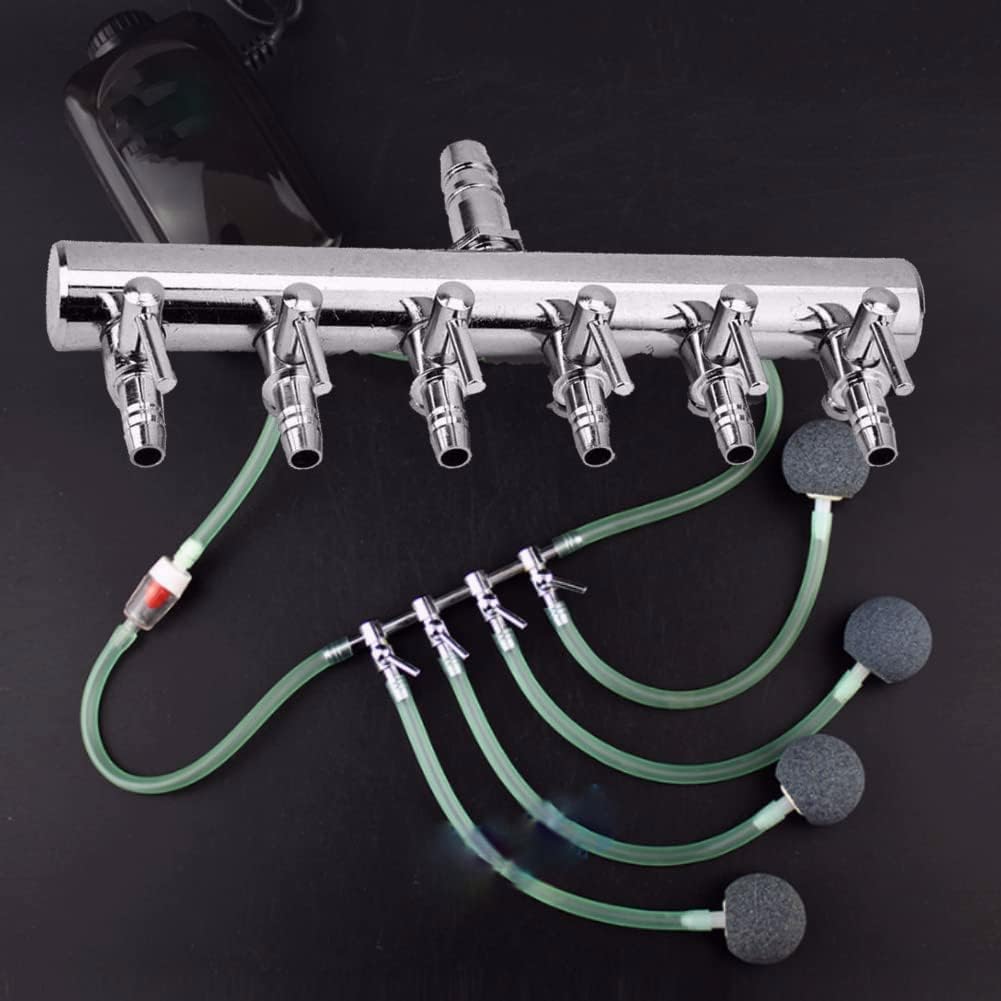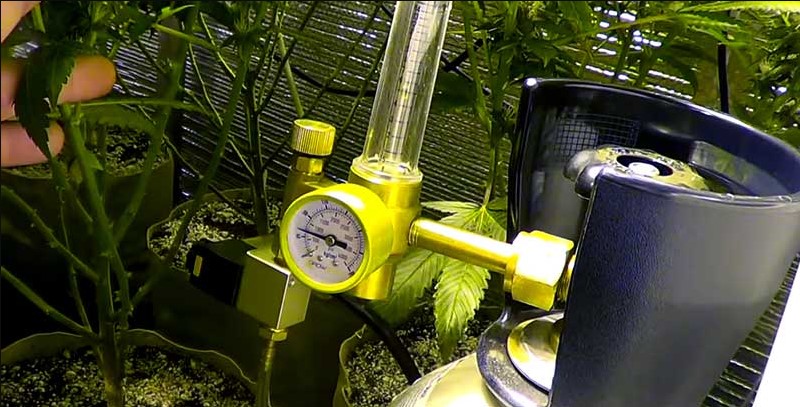When considering a CO2 enriched grow room, it’s essential to ensure that light levels are sufficient to maximize photosynthetic activity. For most plants, including cannabis, optimal light levels during the vegetative and flowering stages typically range from 400 to 1000 µmol/m²/s.
Cultivating cannabis crops in a tightly controlled indoor environment is an art and a science. It involves an intricate interplay of numerous factors, including light, temperature, humidity, and most importantly, carbon dioxide (CO2). Among these, CO2 often gets overlooked, yet it has a profound impact on plant growth and yield. This article gives you a comprehensive guide on building a sealed CO2 enriched grow room, a crucial step towards a thriving, high-yielding indoor garden.
The Vital Role of CO2 in Plant Growth
First and foremost, let’s understand the role of CO2 in plants’ life cycle. Plants, akin to all photosynthetic organisms, rely on CO2 for their growth, proliferation, and reproduction. CO2 is a key player in photosynthesis, where plants convert light energy into chemical energy (glucose), with oxygen as a byproduct.
The Power of CO2: Boosting Growth, Health, and Yield
Enriching your grow room with CO2 can result in a significant boost in your plants’ growth rate, overall health, and yield. Studies indicate that plants perform optimally with CO2 concentrations between 1,200 and 1,500 parts per million (ppm), depending on their growth stage.
Plants exposed to such CO2 levels enjoy faster growth rates, increased vigor, and improved overall yield. Moreover, a well-managed CO2 enrichment system can enhance plants’ resilience against pests and diseases.
Building a CO2 Enriched Grow Room: Key Components
Constructing an optimized CO2 enriched grow room involves several key components. These include sources of CO2, distribution methods, and control systems.
CO2 Sources
CO2 can be introduced into the grow room through various sources. These include CO2 tanks and regulators, CO2 generators, and even compressed CO2 bags. Each of these has its pros and cons, and the choice depends on your specific needs and budget.
CO2 Tanks and Regulators
CO2 tanks are a popular choice among indoor cannabis growers. They typically contain compressed CO2, which is released into the grow room through a regulator. The regulator allows you to control the CO2 flow rate and concentration, catering to your plants’ needs.
CO2 Generators
CO2 generators produce CO2 by burning natural gas or propane. The CO2-rich exhaust is then released into the grow room, providing your plants with their much-loved CO2. An added bonus is that CO2 generators also produce heat, which can help maintain optimal temperatures in the grow room.
Compressed CO2 Bags
Compressed CO2 bags are a budget-friendly option suitable for small-scale growers. These bags contain a CO2-producing substrate (usually a mix of organic materials) that slowly releases CO2 over time. While not as precise or efficient as tanks or generators, CO2 bags can still provide a helpful boost to your plants.
CO2 Control System
To keep your grow room’s CO2 levels in check, you’ll need an automated CO2 control system. These systems monitor the CO2 concentration in your grow room and adjust the CO2 source to maintain the desired level.
Designing Your CO2 Control System
Designing a CO2 control system involves several steps. These include assessing your grow room size and requirements, determining the ideal CO2 level for your plants, selecting and installing appropriate CO2 sources, implementing effective CO2 distribution methods, and sealing your grow room.
Assessing Your Grow Room Size and Requirements
Before you start designing your CO2 control system, it’s crucial to assess your grow room’s size and requirements. Factors like the number of plants, their growth stage, and the desired CO2 concentration will determine the design of your CO2 control system.
Determining the Ideal CO2 Level for Your Plants
As mentioned earlier, the ideal CO2 level for your plants depends on their growth stage. During the vegetative stage, aim for CO2 levels of 1,000-1,200 ppm. When the plants enter the flowering stage, you can increase this to 1,200-1,500 ppm for maximum yield potential.
Selecting and Installing Appropriate CO2 Sources
Once you’ve determined your grow room’s CO2 needs, you can select the appropriate CO2 source and install it in your grow room. This could be a CO2 tank and regulator, a CO2 generator, or a compressed CO2 bag.
Implementing Effective CO2 Distribution Methods
With your CO2 source in place, it’s time to ensure the gas is distributed evenly throughout your grow room. You can do this by installing diffusion tubing and emitters, implementing a CO2-enriched water system, or using oscillating fans for air circulation.

Sealing Your Grow Room for Stable CO2 Enrichment
Creating a sealed environment is essential for maintaining stable CO2 levels and maximizing the efficiency of your CO2 enrichment system. Here’s how to effectively seal off your grow room:
- Inspect for Leaks: Before sealing your grow room, thoroughly inspect it for any potential sources of leaks. Check windows, doors, vents, and any other openings where air could escape or enter. Use weather-stripping, caulking, or sealant to seal off these areas and prevent air leakage.
- Use Reflective Materials: Consider lining the walls, ceiling, and floor of your grow room with reflective materials such as Mylar or white polyethylene. Not only do these materials help reflect light back onto your plants, but they also create a barrier that helps seal off the space and maintain CO2 levels.
- Seal Ductwork: If your grow room utilizes ductwork for ventilation or air circulation, make sure to seal any joints, seams, or connections to prevent air from escaping. Use duct tape or foil tape to seal off these areas effectively.
- Install a Sealed Door: Consider installing a sealed door with weather-stripping around the frame to create an airtight seal. This helps prevent air exchange between the grow room and the surrounding environment, ensuring that CO2 levels remain stable.
- Seal Electrical Outlets and Fixtures: Electrical outlets and fixtures can be potential sources of air leaks. Seal them off using foam gaskets or silicone sealant to prevent air from escaping or entering through these openings.
- Use Positive Pressure: Maintain positive pressure inside the grow room by ensuring that air is constantly being supplied into the room. This helps prevent air from leaking out through small openings and maintains a consistent internal environment.
- Consider Double Doors: If possible, consider installing double doors with an airlock system. This adds an extra layer of insulation and helps prevent air exchange when entering or exiting the grow room.
- Regular Maintenance: Periodically check the seals and insulation in your grow room to ensure they remain intact. Replace any worn weather-stripping or sealant as needed to maintain an effective seal.
How to Measure CO2 Levels in Your Grow Room
Monitoring carbon dioxide (CO2) levels in your grow room is crucial for ensuring optimal conditions for plant growth and maximizing yields. Here are some methods to accurately measure CO2 levels:
- CO2 Monitors or Sensors: Utilizing CO2 monitors or sensors is one of the most reliable methods for measuring CO2 levels in your grow room. These electronic devices use infrared technology to detect CO2 concentrations in the air with precision. Place the sensors strategically throughout the grow room to capture accurate readings from various areas.
- Handheld CO2 Meters: Handheld CO2 meters offer a convenient way to spot-check CO2 levels in different locations within your grow room. Simply take the meter to different areas and take readings to ensure uniform CO2 distribution. While they may not provide continuous monitoring, handheld meters are handy for quick assessments.
- Chemical CO2 Test Kits: Chemical test kits provide an alternative method for measuring CO2 levels, albeit less precise than sensor-based devices. These kits involve taking air samples and performing chemical reactions to determine CO2 concentration. While they may be more labor-intensive and less accurate, they can still offer valuable insights into CO2 levels in your grow room.
- Data Loggers: Data loggers are useful for continuous monitoring of CO2 levels over time. These devices record CO2 concentrations at regular intervals, allowing growers to track trends and make informed adjustments to their CO2 enrichment systems. Data loggers are often used in conjunction with CO2 monitors for comprehensive monitoring.
Regardless of the method chosen, it’s essential to calibrate your CO2 monitoring equipment regularly to maintain accuracy. Additionally, place your monitoring devices strategically to capture representative CO2 levels throughout the grow room. By monitoring CO2 levels effectively, you can ensure optimal growing conditions and achieve impressive yields in your indoor garden.
Tips for Optimizing Your CO2 Enriched Grow Room
To get the most out of your CO2 control system, consider the following tips:
- Utilize energy-efficient equipment and practices
- Adjust CO2 settings for different growth stages
- Monitor and adjust temperature and humidity in tandem with CO2 levels
- Ensure proper ventilation to balance CO2 enrichment and air exchange
- Implement CO2 monitoring and safety measures to prevent hazardous conditions
VPD chart for cannabis growing, incorporating CO2
| Growth Stage | Temperature (°F) | Humidity (%) | CO2 Levels (ppm) | Lights on Optimal VPD Range (kPa) | Lights off Optimal VPD Range (kPa) |
|---|---|---|---|---|---|
| Seedling | 68-77 | 70-75 | – | 0.6-1.0 | 0.4-0.7 |
| Vegetative | 70-85 | 40-60 | 800-1200 | 1.0-1.5 | 0.8-1.2 |
| Early Flower | 70-78 | 40-50 | 1000-1500 | 1.2-1.7 | 1.0-1.5 |
| Mid Flower | 68-75 | 40-50 | 1000-1500 | 1.5-2.0 | 1.2-1.7 |
| Late Flower | 65-72 | 40-50 | 1000-1500 | 1.7-2.2 | 1.5-2.0 |
| Pre-Harvest | 60-68 | 40-50 | 800-1200 | 1.2-1.7 | 1.0-1.5 |
Conclusion
A well-designed CO2 enriched grow room can make a massive difference in your plants’ growth, health, and yield. By providing your plants with the optimal CO2 levels they crave, you can achieve stronger, healthier plants and a more bountiful harvest. So, go ahead and harness the power of CO2 for an unparalleled indoor gardening experience!




